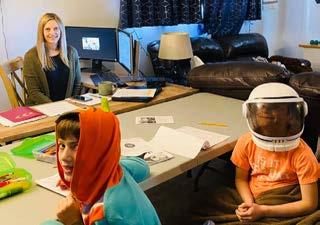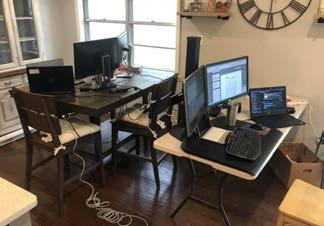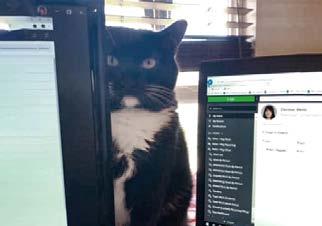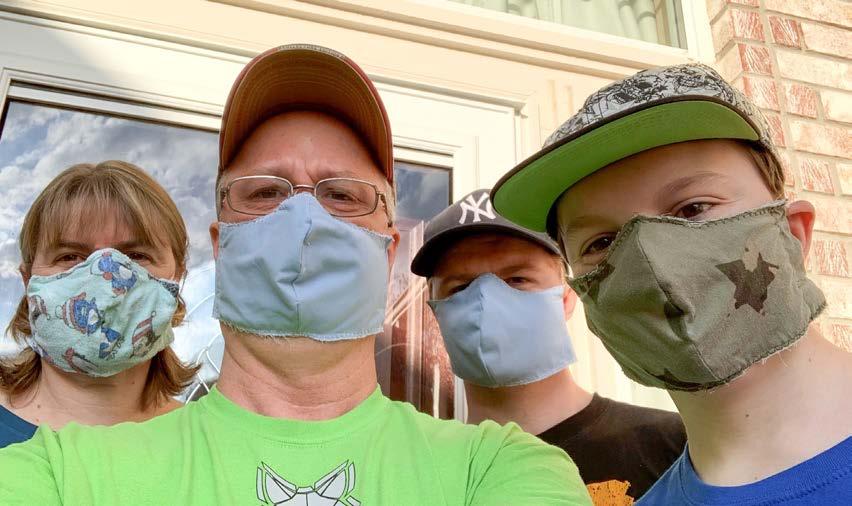
5 minute read
CATS, CAMPERS AND KITCHENS, OH, MY
If you’ve been watching ONEOK’s share price recently, you might be wondering what’s going on and when it will recover – as are investors. Megan Patterson, manager, investor relations in Tulsa, and her team are quick to remind callers that ONEOK’s business fundamentals have not changed. The basins where ONEOK operates are the most prolific in the country, and our customers are some of the largest, most resilient and financially strong producers in the business. “Our positive view for the future is supported by our ability to bring natural gas onto our system that is often being flared in the Williston Basin, which should provide volumes to all three of our business segments this year,” Patterson said. “We’ve already proactively announced reductions in capital expenditures and have delayed or scaled back on growth projects," said Patterson. "But the work we've already completed allows us to resume these
projects quickly when the market improves."
Advertisement

Megan Patterson, manager, investor relations, holds newborn baby Blakely alongside Cooper. “Investor calls have slowed a bit compared with March and April since the markets have started to improve," said Patterson. “But it was all hands on deck there for a while.”
The Investor Relations group now is busy continuing communicating with investors, working to stay in contact as much as possible and sharing what information they can.
“Being responsive is a large part of what we do in Investor Relations,” acknowledged Patterson. “We know how important it is to be accessible to the investor community, especially during times of market uncertainty.”
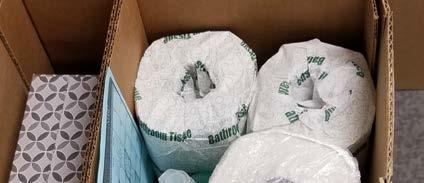
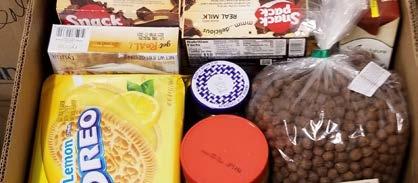
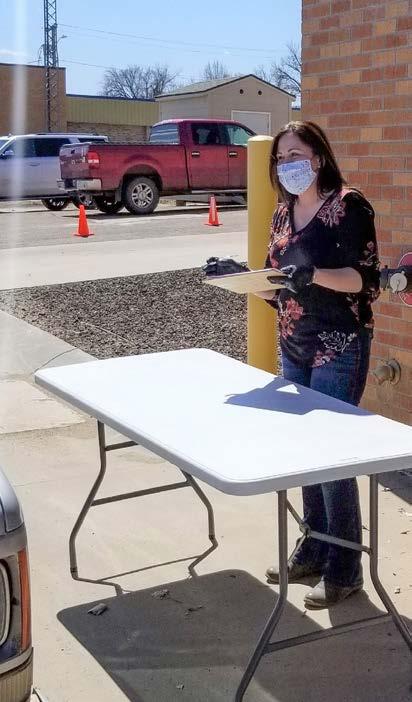
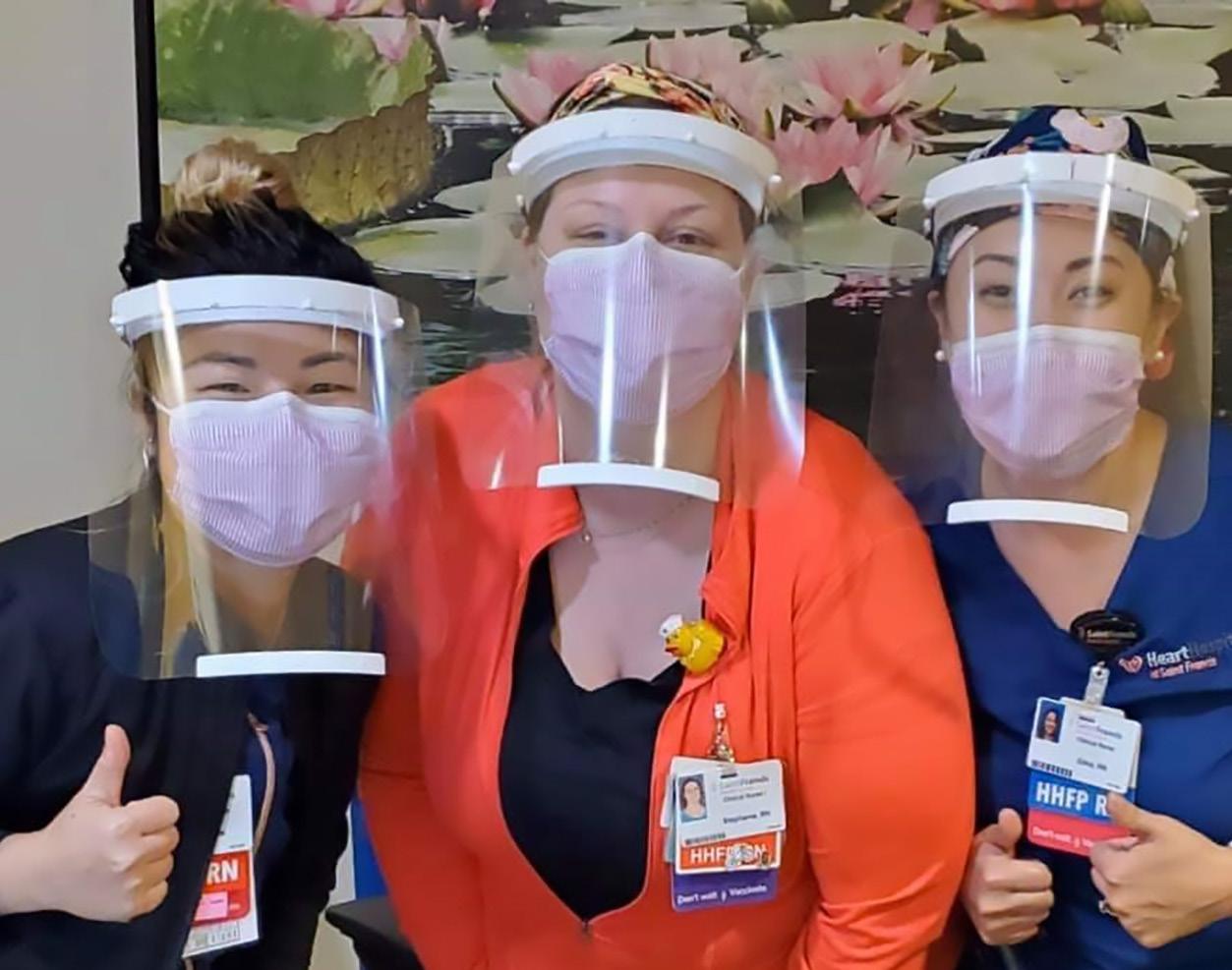
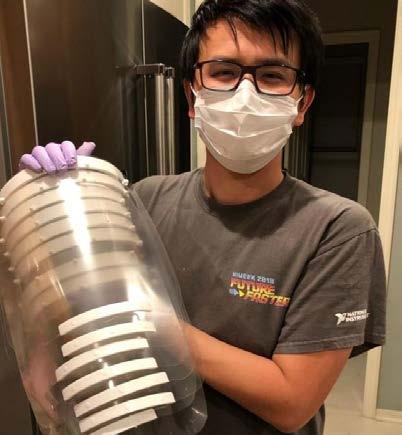
In the wake of the coronavirus pandemic, ONEOK remains steadfast in valuing community service and supporting the communities where we operate and employees work and live.
“Being a good corporate citizen and giving back to our communities is who we are and what we do,” said President and CEO Terry Spencer. “Now it is more important than ever to support the communities that need us.”
The global pandemic has affected all of our operating areas, and there are commonalities across communities as far as needs: technology for students moving to distance learning, food for at-risk groups, services for elderly who are sheltering in place and assistance to meet individuals’ immediate needs due to loss of wages or employment.
“It is even more important now to communicate with and rely on our community partnerships, collaborations and employees to ensure we support the organizations that are helping our friends and neighbors in this time of need,” Terri Pirtle said Terri Pirtle, executive director, ONEOK Foundation in Tulsa. “Our employees have stepped up in this time of adversity, and we hope to make them proud by doing the same for those who need help.”
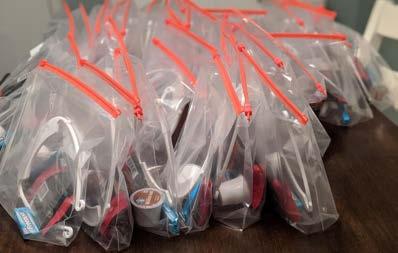
“Our employees have stepped ONEOK committed up in this time of adversity, and approximately we hope to make them proud $600,000 toward COVID-19 support, as by doing the same for those well as in-kind support who need help.” – TERRI PIRTLE by donating personal protection equipment and other items to organizations that have workers on the front line dealing with the virus. In addition to new requests, ONEOK plans to honor all commitments to charitable organizations made prior to the pandemic.
As things change day to day, Community Investments continues to evaluate needs and how we can support them.
“We’ve heard many stories about employees finding ways to help, from sewing masks to donating food to continuing to mentor virtually,” Pirtle said. “We encourage employees to let Community Investments know of opportunities in their communities, as well as be sure to record their personal volunteer hours to earn a volunteer service grant or apply for an employee matching grant for financial contributions to qualifying charitable organizations.”
P.O. Box 871 Tulsa, Oklahoma 74102–0871
It’s been a little crazy for most folks in Information Technology (IT), as John Hill can attest.
Hill, systems analyst in Tulsa, Oklahoma, was involved in getting the Pipeline Monitoring team set up with a duplicate backup cell phone solution for ONEOK Plaza and the temporary Corporate Woods location. He also provided mobile hotspots where needed for at-home users who didn’t have good cell service.
He’s managed it all from his new “corner office” – i.e, his kitchen table with a view of the back porch.
“The biggest decision is what T-shirt to wear that day,” said Hill. “And I love the commute to work.”
Hill is one of hundreds of employees working from home in response to COVID-19. Many employees previously worked remotely from a company vehicle or even on a project site. But this spring, the majority weren't planning to work from home. With unexpected remote work came issues of functional/designated office space, staying connected and managing other responsibilities.
But with our commitment to service still ever-present, employees adapted.
“The funniest part of remote work is doing video chats or meetings,” said Hill. “You see that everyone else’s work from home is just as chaotic as mine.”
Hill also is one of dozens of employees who answered our invitation to share photos of employee remote workspaces. Like Liz Kleinke, manager, administrative services in Sidney, Montana,
EMPLOYEES SHARE THEIR REMOTE WORKSPACES.
John Hill, systems analyst, shares his remote workspace with the family dog.

whose workspace at home doubles as a classroom for her kids’ remote learning. Meanwhile, both Travis Bower, manager, project engineering in Sidney; and Carter Boman, lead plant operator in Maysville, Oklahoma, have turned their campers into makeshift offices.
Matt Akins, operations engineer in Tulsa, is dealing with internet bandwidth and conference calls alongside his wife, Meaghan Akins, engineering technician – safely alongside, by the way.
“Her monitors are 6 feet from mine, don’t worry,” he said
Enjoy a look at the at-home work lives of other employees throughout the company, which have been shared in this issue.

